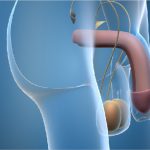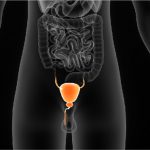Testicular cancer is the cancer in the testicles, the male reproductive organ that makes hormones and sperm. Read more about testicular cancer here.
What is chemotherapy?
Chemotherapy is a systemic therapy which uses drugs in treating cancer. These drugs are taken orally or are given intravenously with the help of a needle. Generally, to treat testicular cancer drugs are given in vein IV. These drugs travel throughout the body and aim at destroying the cancer cells. This treatment is mainly used for breaking the tumors and killing the cancer cells. Depending on the spreading of the cancer, tolerance of the patient, type and stage of the cancer, chemotherapeutic drugs are prescribed to the patients by an oncologist.
How is chemotherapy given:
Chemotherapy is given in cycles. The treatment sessions and respective chemo cycles depend on the drugs used. Chemotherapy is given in many ways:
Oral Chemotherapy:
The drugs are taken orally. They come with a protective coating which can be broken down in the stomach, allowing the intestines and stomach to absorb the drug.
Intravenous:
This is the most commonly delivered method for chemotherapy. In this method, the drugs are injected into the veins. This allows rapid circulation of the drug in the bloodstream that carries the drug to the tumour. There are several ways of intravenous administration:
- Cannula: A small, thin tube or cannula is fixed temporarily in the veins of the forearm.
Portable infusion pump: Small pressure pumps are used to deliver the drug at a slower pace. - Port-a-cath: This system eliminates the discomfort caused by other systems and is used in patients who require constant or frequent administration.
- Central Lines (Tunnelled Catheters): These are placed through the skin in the middle of the chest. They are pushed through the subcutaneous tissue and inserted into the superior vena cava. The catheters have lumens or entrances that facilitate extraction of blood samples and giving the drugs simultaneously.
Types of chemotherapy in the treatment of testicular cancer:
Chemotherapy is often given in cycles. Post each cycle, the patient is given a rest period to recover from the side effects of the drugs. Following are the approved chemotherapeutic drugs used for testicular cancer:
Cisplatin:
It is one of the most common and recommended drugs for treating testicular cancer. It is a chemotherapeutic drug which contains platinum. The drugs is prescribed alone or in combination with other drugs to restrict the cell growth. It works by obstructing the DNA replication, which results in killing the rapidly proliferating cells.
Etoposide (VP-16):
Etoposide is an antineoplastic drug that is often given intravenously and rarely, it is taken orally. It has to be injected into the veins very carefully as it can cause tissue damage on rerouting. The drug works by forming a ternary complex with the DNA and the topoisomerase II enzyme, and breaks the DNA strands by preventing their re-ligation.
Bleomycin:
This drug is used in treating metastatic testicular cancer and is given intravenously or into the muscle or under the skin. It has to be given slowly, for around 30 mins. Patient’s condition is often tested before prescribing the drug, as it can have adverse side effects.
Ifosfamide:
This anti-cancer chemotherapy drug is used for treating recurrent testicular blood cancer and germ cell tumours. It is given intravenously. It is one of the safest drugs for treating testicular cancer.
Paclitaxel:
This chemotherapeutic drug used to treat testicular cancer is given only intravenously. It has to be given with utmost care, else it can cause tissue damage. It is used for restricting the cell division and growth.
Vinblastine:
This drug is used to reduce the growth of testicular cancer and is given intravenously at a slow pace.
Combination of chemotherapeutic drugs for testicular cancer:
Chemotherapeutic drugs are often given in combination with other chemotherapy drugs. Learn more about the chemotherapy drugs here These drugs have a higher impact in treating the cancer. Combining the drugs also increases the survival rate. Following are the chemotherapeutic regimen in treating testicular cancer:
- BEP (or PEB): This is a combination of bleomycin, etoposide and cisplatin. It is used in treating both seminomas and nonseminomas.
- EP: This drug is a combination of etoposide and cisplatin. It is often used in the treatment of stage IB and II of seminomas and nonseminomas.
- VIP: This is a combination of Etoposide and cisplatin, used in treating metastasized testicular cancer.
Side effects of chemotherapy in testicular cancer:
Chemotherapy is a procedure that aims in killing the cancer cells, but in this procedure, a lot of healthy cells are also damaged resulting in side effects. The effects vary from each person and treatment, they also depend upon the tolerance levels and medical history of the patient. Following are the most common short term effects:
- Hair loss
- Mouth sores
- Loss of appetite
- Nausea and vomiting
- Diarrhea
- Low white blood cell count (makes the patient prone to infections)
- Low platelet count (leads to easy bleeding and bruising)
- Low red blood cell count (causes anemia and fatigue)
Long term side effects of chemotherapy in treating testicular cancer:
- Effect on Kidney: Cisplatin and ifosfamide cause renal failure which leads to kidney damage.
- Effect on the peripheral nervous system: Cisplatin, paclitaxel, and vinblastine damage the nerves leading to neuropathy. This causes numbness and tingling of hands and legs, particularly fingers and toes.
- Effect on ears: Cisplatin affects the ears leading to hearing inability.
- Effect on lungs: Bleomycin causes shortness of breath and difficulty in breathing during physical activities.
- Effect on heart: Chemotherapeutic drugs increase the heart rate and blood pressure.
- Effect on fertility: During the treatment of testicular cancer, the body’s ability to produce sperm reduces.
- Hormonal imbalances: Chemotherapy can lead to severe abnormalities of testosterone in the body.
- Effect on bladder: Ifosfamide causes bleeding of the bladder.
Generally, most of the short term side effects go away post the recovery phase, but in very few cases, they lead to further complications. The patients have to deal with the long term side effects for lifetime. However, they can reduce the intensity with which the drugs affect the patients by taking proper health care and having regular check-ups with the doctor.
Dosage and survival rate:
Depending on the diagnostic results, tolerance levels and overall general health of the patient, the dosage is prescribed. Generally, for stage II testicular cancer, 3 to 4 cycles of chemotherapy are given and for stage I, chemo is given in two or three cycles. Fully metastasized stage II and stage III of testicular cancer will need higher dosage of chemotherapy or even a combination of chemotherapeutic drugs. Before starting the chemo, the doctor should be informed about the patient’s previous medical history, mental and physical strength along with allergic reactions. This helps the doctor determine the best drug and dosage for the patient.
The 5-year survival rate of chemotherapy as a treatment for testicular cancer is 73%.
Care to be taken:
During chemotherapy, regular monitoring of the patients is compulsory. They have to follow a healthy regime in order to cope up with the effects. The general follow up for testicular cancer can be read here.
- Foods with unpleasant tastes have to be avoided
- Regular exercise is a compulsion
- Post treatment, dosage should be changed and monitored based on the tolerance levels.
- Have to take 6-8 small and healthy meals
- Must stay hydrated
- Take good skin care
- Blood transfusion is required in case of lower blood cell count
- All the medications being used must be prescribed the doctor only
- Avoid vaccinations
- The patients have to maintain a proper health record




